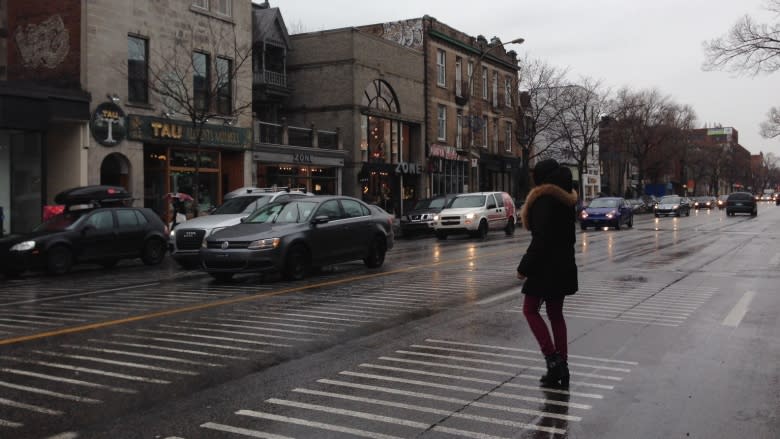5 ways to improve pedestrian safety
A recent analysis on pedestrian accidents revealed that close to 5,000 pedestrians were injured between 2011 and 2014.
The distressing statistics have prompted calls for more secure streets and raise the question of how to make pedestrians safer.
Radio-Canada, CBC's French-language service, asked that very question to two experts in the field.
Here are their top five solutions on how to most effectively improve pedestrian safety.
1. Reduce vehicle speed
Patrick Morency, a community health expert with Montreal's public health agency, believes reducing drivers' speed is a good first step towards making pedestrians safer.
Morency, who's been working on pedestrian safety since 2003, said speed limit signs are not enough — physical measures to reduce vehicle speed are especially needed.
"The best-known measure is the speed hump, but there are many others, such as curb extensions, traffic islands [and] medians," Morency said.
2. Decrease crosswalk distances
Another key to reducing the number of collisions between pedestrians and vehicles is to reduce crosswalk distances.
"The longer the pedestrian crosswalk, the more traffic lanes there are. And the longer the crossing time, the more pedestrians risk being exposed to vehicles," said Morency.
According to Morency, adding traffic islands or curb extensions would be good strategies to make wide traffic arteries safer.
"The idea is both to reduce the length of the cross, but also to provide a refuge in the middle for those who do not have time to cross," added Morency.
3. Install more raised crosswalks
A little-known and undeveloped solution is the raised crosswalk, according to Félix Gravel, a spokesman for the pedestrian safety organization Piétons Québec.
Raised crosswalks allow pedestrians to cross at the same height as the sidewalk, which increases their visibility.
"We're telling the driver, 'Careful! Look, it's the pedestrian that has priority,'" said Gravel.
He said Montreal and the boroughs have much to gain by adding raised crosswalks, especially near alleys.
"When a pedestrian walks out of an alley and wants to continue in the same alley, legally they have to go to the nearest intersection, but nobody respects that, " said Gravel.
"We're not taking into account the behaviour of passersby."
4. Respect the 5-metre parking rule
Enforcing the rule that prohibits cars from parking within five metres of an intersection would make a "major" difference, said Gravel.
Some boroughs have painted a portion of their pavements yellow to help drivers comply with this rule.
"All the public health data say it's necessary because that's the braking distance required for a driver to see a pedestrian," said the Piétons Québec spokesman.
The loss of five metres of parking space doesn't make for happy drivers, but for Gravel, keeping that space for cars would be "sacrificing pedestrian safety in favour of easy parking."
5. Add pedestrian lights
Morency says pedestrians should have their own traffic lights, as is the case in Quebec City. When a pedestrian light turns green, all traffic lights for drivers remain red.
"In Quebec, it is the norm — pedestrian lights are not automatic. When you get to the intersection, you have to press the button and then all the traffic lights turn red and [pedestrians] can cross in all directions," said Morency.
For its part, the city of Montreal intends to implement a measure where traffic lights remain red for two seconds longer in order to give pedestrians more time to reach the sidewalk when they cross at the last minute.




